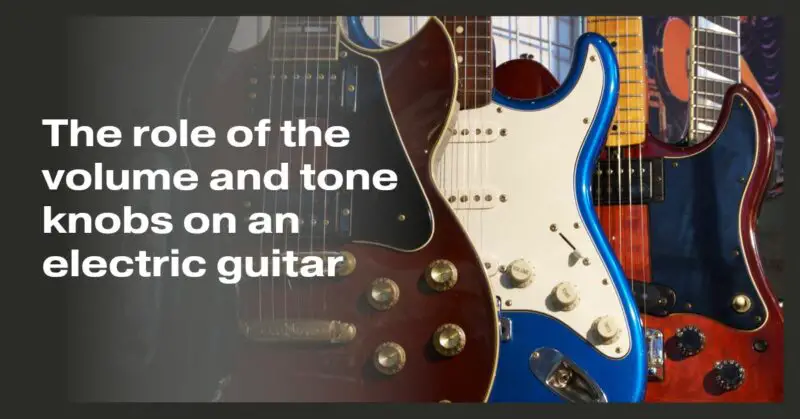Electric guitars are versatile instruments, capable of producing an array of tones and textures. Two essential components that help guitarists shape their sound are the volume and tone knobs. While they may appear simple, these knobs play a pivotal role in controlling the dynamics and timbre of the instrument. In this article, we’ll delve into the functions and significance of volume and tone knobs on an electric guitar.
Volume Knob: The Dynamics Controller
The volume knob on an electric guitar, typically located near the guitar’s bridge or in the control cavity, does precisely what its name suggests – it controls the guitar’s output volume. However, its impact goes beyond mere loudness:
- Dynamic Range: The volume knob allows you to adjust the guitar’s dynamic range. At full volume, your guitar produces its maximum output, while rolling the knob back reduces the output gradually.
- Clean to Overdrive Transition: One of the most iconic uses of the volume knob is to control the transition from clean to overdriven tones. By lowering the volume, you can clean up a distorted sound, providing a wide tonal range within a single pickup setting.
- Tonal Control: Lowering the volume can mellow out a bright or harsh tone, making it more suitable for rhythm playing or softer passages.
- Live Performance: During a live performance, the volume knob allows you to quickly adjust your guitar’s output level to suit different parts of a song or adapt to changes in the band’s dynamics.
Tone Knob: The Timbre Shaper
The tone knob, often found near the volume knob, affects the timbre or tonal quality of your guitar’s sound. It serves a more nuanced role in shaping your guitar’s sonic characteristics:
- High-End Roll-Off: Turning the tone knob counterclockwise (towards “0”) reduces the high-frequency content, resulting in a warmer, mellower tone.
- Brightness Control: Conversely, turning the tone knob clockwise (towards “10”) accentuates high frequencies, creating a brighter, more cutting sound.
- Versatile Sound Sculpting: The tone knob allows for subtle adjustments in tonal character, making it a valuable tool for tailoring your sound to different playing situations.
- Complementing Different Pickups: The tone knob can be used in conjunction with pickup selection to fine-tune your guitar’s timbre. For example, you can roll off the tone on the bridge pickup for a smoother sound while keeping the neck pickup bright.
Experimentation and Expression:
One of the beauty of volume and tone knobs on electric guitars is their capacity for expression and experimentation:
- Tonal Exploration: Adjusting these knobs allows you to explore the tonal possibilities of your guitar. Finding the right balance between volume and tone can yield a wide range of sounds.
- Live Performance Dynamics: In a live setting, these knobs give you the flexibility to adapt your sound on the fly, enhancing your expressiveness as a player.
- Tonal Signature: Every guitarist can develop their unique tonal signature by mastering the subtleties of volume and tone control, allowing for a distinctive sound that sets them apart.
Conclusion: Mastering the Sound Sculptors
Volume and tone knobs are often underappreciated but essential tools for electric guitarists. They provide the means to shape your instrument’s dynamics and timbre, making them integral to your musical expression. Whether you’re fine-tuning your tone in the studio, adjusting for different parts of a live performance, or seeking your own signature sound, these simple yet powerful knobs are your allies in crafting the sonic landscapes of your music.


